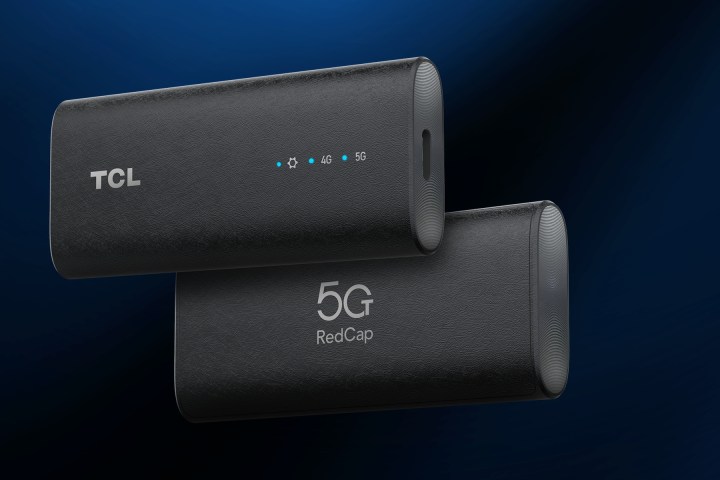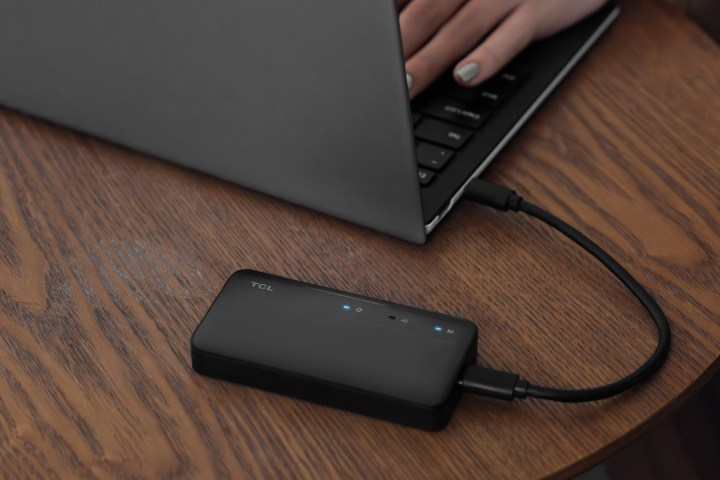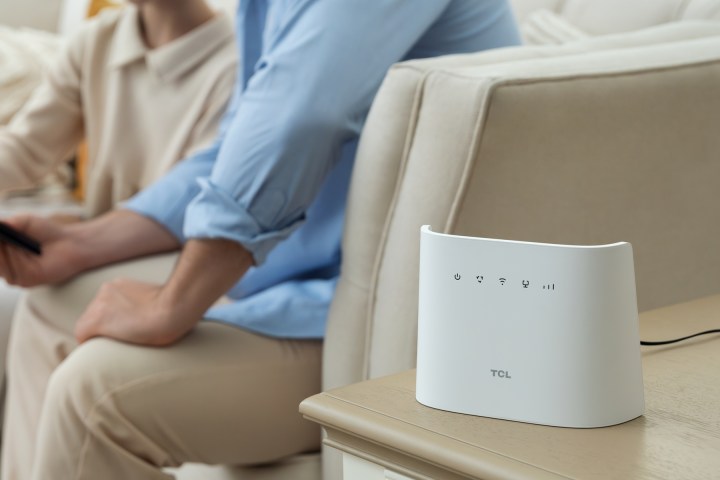
TCL is having a busy start to 2024. First, it announced a staggering number of new smartphones and two new tablets at CES, and now it’s unveiling something else at MWC 2024 — one of the world’s first 5G dongles that takes advantage of the latest power-efficient 5G standards.
TCL Mobile’s Linkkey IK511 is a pocketable new 5G adapter that’s powered by Qualcomm’s Snapdragon X35 5G Modem-RF system, which debuted last year as the first 5G modem to support the new NR-Light “RedCap” standard.
5G for everyone, everything, everywhere

RedCap is short for “reduced capability,” and while that may not sound like what you want from a 5G modem, it’s actually a good thing as it fills an important void and promises to bring 5G to a whole new class of devices.
While Qualcomm’s flagship modem chips, like the new Snapdragon X80, are incredible powerhouses, great power comes with great energy consumption. That’s fine for something like a Samsung Galaxy S24 Ultra. Still, not every device needs to achieve the insanely fast 5G speeds delivered by mmWave networks and new technologies like 5G Carrier Aggregation. These premium chips also don’t come cheap.
There’s more to 5G than just raw speed. A higher capacity allows more devices to stay connected in busy places, and low latency means that you get much fasters response time on all the little back-and-forth things that most of us do much more often — such as instant messaging, checking social media, and receiving notifications. Plus, 4G/LTE networks won’t be around forever.
The result is that there are whole classes of devices that need 5G connectivity, but can’t handle the power requirements of a smartphone or tablet 5G modem. Qualcomm’s X35 was initially heralded as a 5G modem chip to power the next generation of smartwatches. That will still likely be the most common use case, but as TCL’s new Linkkey IK511 proves, it’s not the only one.
Connecting the unconnected

While pricing has yet to be announced, the Linkkey IK511 promises to deliver a more affordable way for users to move away from 4G/LTE networks and enjoy the benefits of 5G. The reduced capabilities also mean reduced costs, but for most folks, the IK511 should deliver more than enough performance for everyday use, as the RedCap standard is still capable of delivering download speeds of up to 150Mbps and upload speeds reaching 50Mbps.
To put that in perspective, a 4K UHD stream from Netflix only requires 15Mbps of bandwidth, while even the highest-0quality streaming services, like Disney+ and Apple TV+, peak at around 40Mbps.
TCL hopes its new 5G dongle will help to democratize 5G. “Together with Qualcomm Technologies, TCL will bring 5G to more customers and help to mark a new chapter in the future of connectivity and interconnected devices, to accelerate global connectivity,” said Jesse Wu, TCL’s general manager of Smart Connected Devices.

The Linkkey IK511 joins the more powerful Linkkey IK512, which is designed for situations that require more bandwidth. It supports 5G speeds of up to 2.46Gbps, along with the Linkhub HH132 Pro router for delivering fixed wireless access (FWA) to homes and small businesses. While TCL says the Linkkey IK512 will be available in Europe later this year, pricing and availability for the IK511 hasn’t yet been confirmed.
Editors' Recommendations
- Have T-Mobile? Your 5G service is about to get much faster
- TCL’s new Android phones are coming soon, and they look promising
- Verizon just took a huge leap ahead in the 5G race
- The 5G speed race is over and T-Mobile has won
- Netgear’s new M6 Pro router lets you use fast 5G anywhere you go




